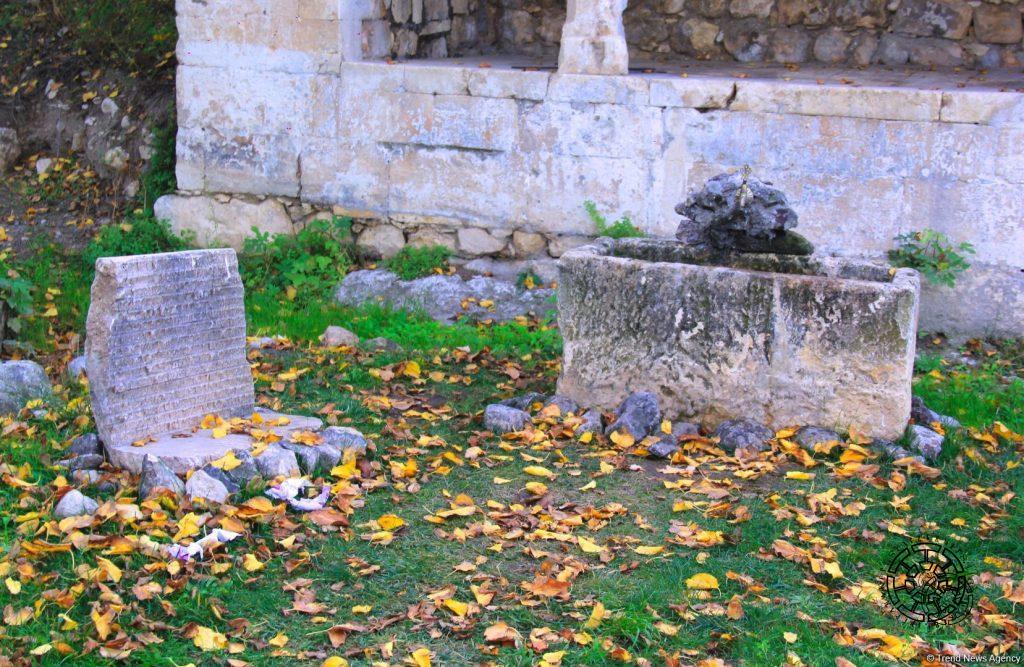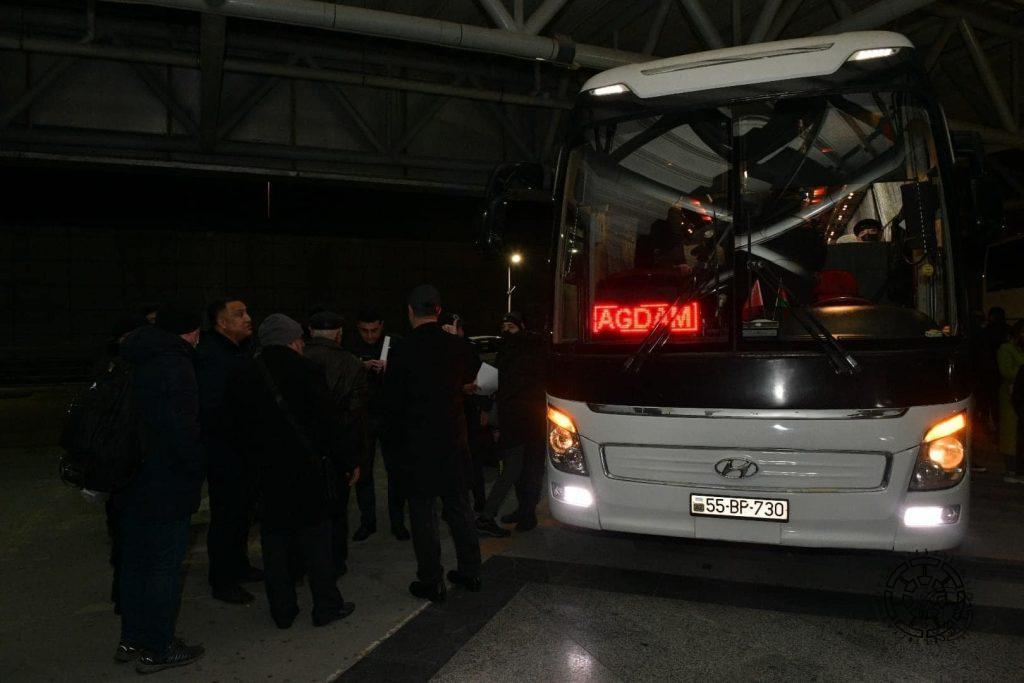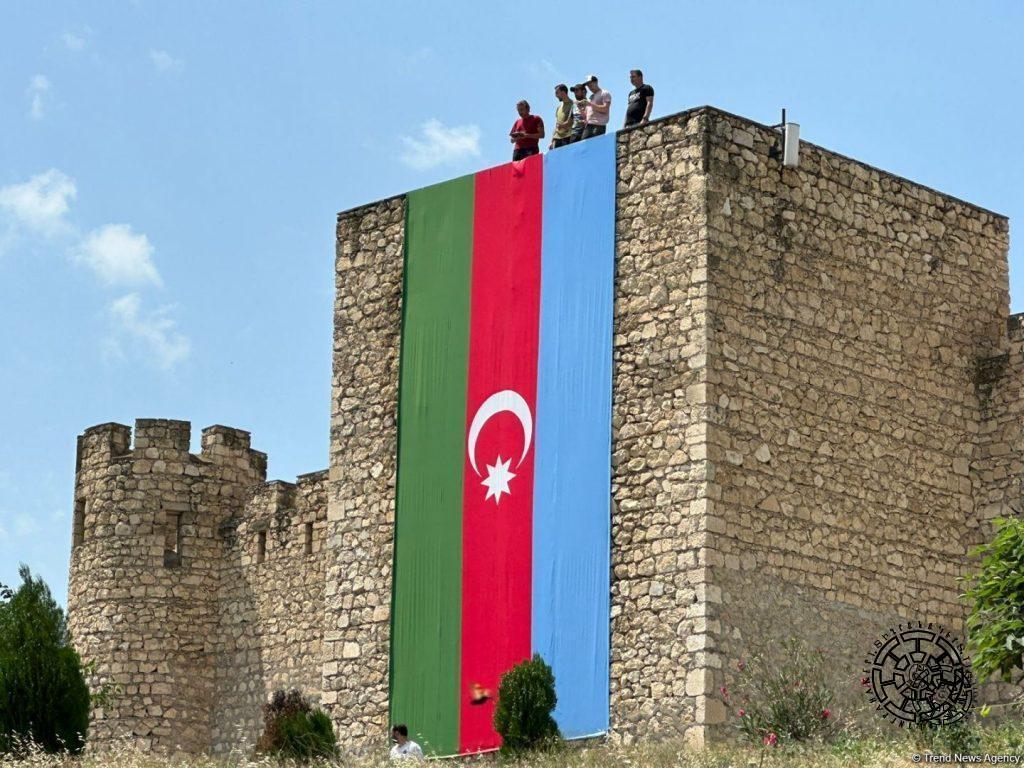Tigranakert in today’s media domain of Azerbaijan
According to the tripartite statement of November 9, 2020, the archeological site of Tigranakert in Artsakh also came under the control of Azerbaijan because it was located in the Aghdam region of the former AzSSR (Azerbaijan Soviet Socialist Republic) based on the Soviet administrative division. The Azerbaijani side announced that the Shahbulag historical fortress built by Panah Khan was “liberated from the Armenian occupation,” naturally without saying a word about Tigranakert. During the entire period of December-January, the Azerbaijani news media showed how the Azerbaijani flag was fixed on the Panah fortress built in the 18th century in the area of Tigranakert in Artsakh. Official videos showed shots of the castle and Royal Springs Park below. It was clear from the official shots that Azerbaijan will not say a word about the Tigranakert archeological site of Artsakh, the area of the excavation site, its affiliation, or its nature. An exception was made only by Rizvan Huseynov, the mouthpiece of Azerbaijan’s anti-Armenian propaganda, who went to the Aghdam region on December 4-6 with a number of journalists. He published a brief video from the early Christian square of Tigranakert, describing the entire area as built during the Panah era, calling the reliquary built into the altar of the small church a bathhouse, the sarcophagi, in which the skeletons still remain, water cisterns. After that, not a single part of the Tigranakert archeological site was shown or commented on in the official news.
In December 2020-January-February 2021, photos and videos taken by the Azerbaijani military could be seen on the Internet, where everyone spoke indiscriminately about the Panah fortress; there were almost no shots from the Tigranakert ancient site in the videos. An exception was a few videos where users shot the fences of Tigranakert Fortified Quarter from a distance, and, of course, without giving any explanation. Some videos show that the Azerbaijani soldiers are tearing up the posters and tickets on the territory of the Tigranakert museum, accompanying them with insulting and blasphemous comments towards Armenians. We can conclude that these areas were completely closed for visits during the mentioned period.
Later, during 2021, the Azerbaijani side organized visits for various local and international journalists, internet bloggers, representatives of various organizations, and especially representatives of the diplomatic corps accredited in Azerbaijan, to show the “destructions made by Armenians.” During these visits, the visits to Tigranakert were of key importance, where visitors were shown only the fortress and mosque built by Panah. During all these visits, the propaganda thesis was advanced that the Armenians damaged the Panah fortress and the mosque, wrongly restoring and Armenianizing them, carrying out illegal excavations in the area, and presenting the found traces of Azerbaijani culture as Armenian. During one of these visits, Hikmet Hajiyev, the assistant to the President of Azerbaijan, announced that the false mythical story about Tigranakert is over. It should be noted that Hikmet Hajiyev was the main organizer of all these visits, the consultant, and the one who personally accompanied and gave explanations during the visits of diplomats and representatives of international organizations.
In the summer of 2021, Azerbaijani President Ilham Aliyev visited Tigranakert. Official videos and photos show that he visited only the Panah fortress and mosque, where he was presented with plans to restore them to their historic appearance and create an archaeological and historical reserve in the area.
Starting on January 24, 2022, the Azerbaijani side made a special tour package for Azerbaijanis, one of the destinations of which was Aghdam. During that trip, the Azerbaijanis, with special tourist buses accompanied by a tour guide and a leader, visit the “liberated” city of Aghdam and Shahbulag Castle, where they also spend their rest in the Royal Springs section. In Royal Springs Park, Azerbaijanis have installed pavilions, barbecue and tea-making facilities, converting the historical setting into a picnic spot. What is even more surprising is that they originally placed it in the area of the excavated pool in front of the mosque. From some photos, we can assume that the interior of the mosque is also used as a warehouse, because various objects and pipes can be seen inside. A water faucet was installed in front of the mosque, and the early Christian sarcophagus of the monument was turned into a water vessel. And this is only one of the Azerbaijani examples of the preservation of the historical environment. Note that during the sixteen years of Tigranakert archaeological research, the expedition did not allow any artificial changes in the historical environment of the city.
After the organization of special tourist trips in 2022 and observing almost the entire Azerbaijani media domain and various social networks, we can state that the Azerbaijani media domain only mentions the fortress of Panah Khan on the ruins of the city of Tigranakert in the 18th century and, in some cases, the mosque. Ancient Tigranakert—the Fortified Quarter, the powerful walls, the Antique Quarters, the large basilica church—is deliberately ignored, nor is there any footage or photographs showing the archeological site, even from a distance. With minor exceptions, the same picture can be seen in the Azerbaijani domain of social networks, where we can find hundreds of photos and videos taken in Panah Castle, Royal Park, or near the mosque, but almost no photos from the Tigranakert archeological site.
Judging how the fortress of Panah is presented in the Azerbaijani media, we can conclude that the fortress of Shahbulag in the territory of Karabakh, along with Shushi, is presented as an important symbol of Azerbaijani identity, presence, and state history, where the key idea is that Panah Khan, the founder of the Khanate of Karabakh, had his first seat and had made this very castle. In this domain, the Karabakh Khanate is presented as one of the manifestations of Azerbaijani statehood (Figs. 1–4).
Azerbaijani archaeologists and historians are also silent about antique and early Christian Tigranakert. Instead, gossip, bluster, threats-you name it. And the most basic argument, the classic Hellenistic fortification system of Tigranakert of the first century before our era (Figs. 5, 6), which is the most essential argument for the city’s identity, is bypassed. The Azerbaijani “researchers” stubbornly do not see the walls opened by excavations about one kilometer long, the round and rectangular towers, the squares weighing up to one and a half tons, the rustic (pillow-like) processing of the squares, or the swallow-tail connections. They don’t see, because it was impossible to create all that without the involvement of hundreds of specialists in Asia Minor and Armenian architectural thought and construction techniques, without a powerful imperial initiative that could concentrate that potential here. This was done by Tigranes the Great by building powerful defensive systems near the entrances to the Artsakh and Utik river valleys, protecting the highlands, and keeping the steppes under control up to the Kur River.
If the Azerbaijani side wants to prove that Armenians have done wrong research, falsified it, etc., they can present their arguments and justifications within the limits of academic courtesy. For two years, there have been nothing but cheap headlines about Tigranakert. There is no counterargument, no justification. The Azerbaijani side does not seem to be used to speaking in language of facts and science.
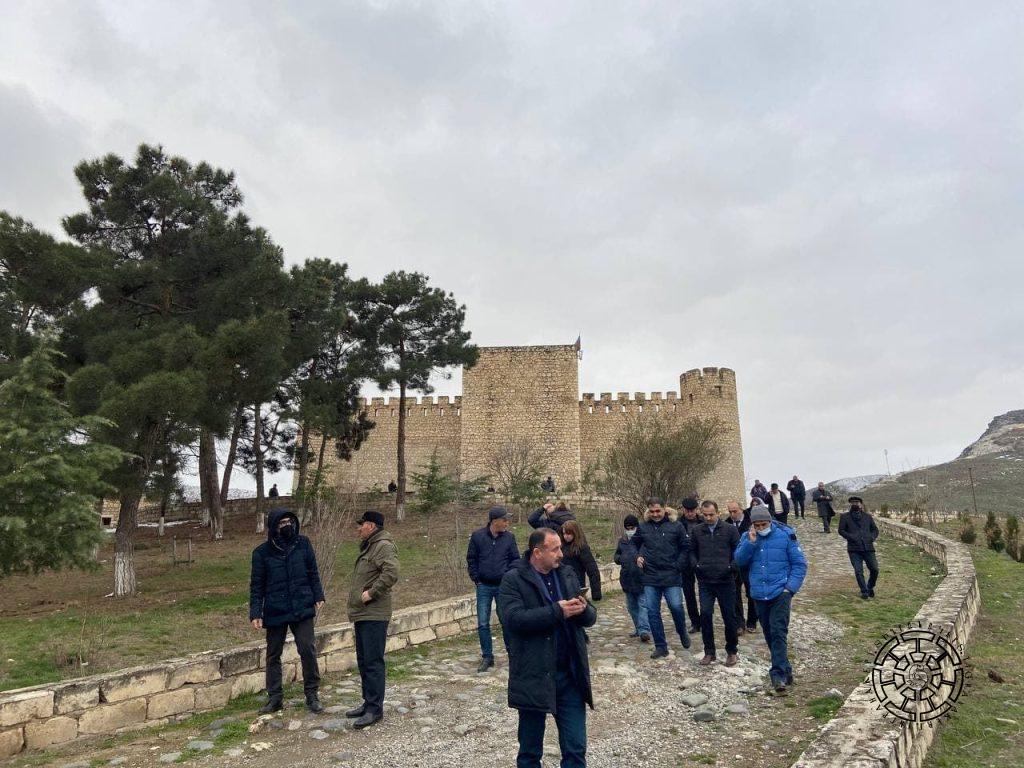
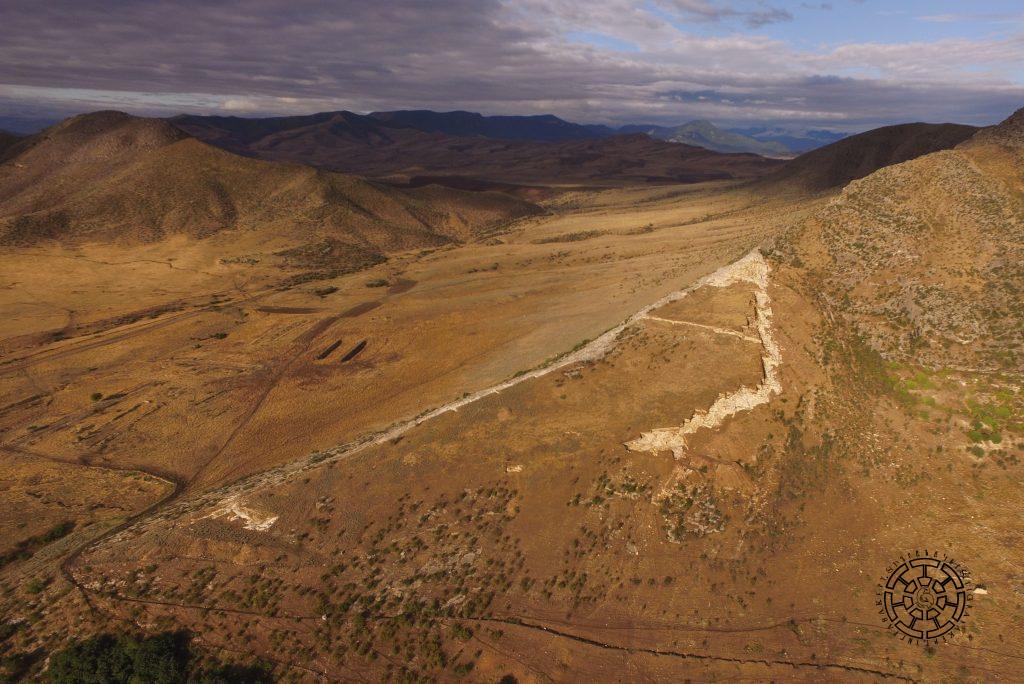
Տեքստում և տեսադարանում տեղադրված բոլոր լուսանկարները վերցված են հետևյալ ադրբեջանական կայքերից՝ www. sputnik. az, www. media. az, www. report. Az, www. azrforum. az կայքերից:
